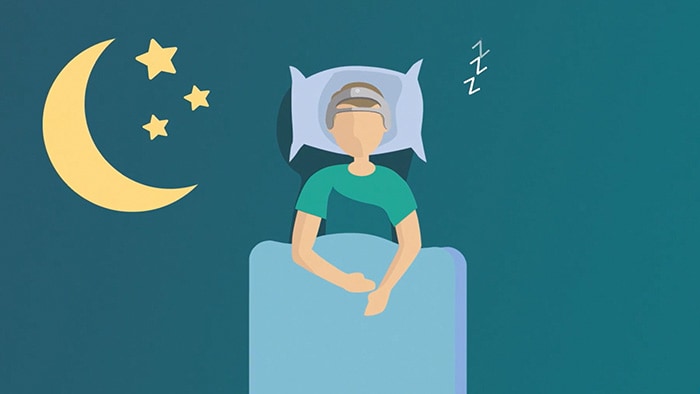What is sleep apnea?
Sleep apnea is a common sleep disorder characterized by repeated interruptions in breathing throughout the sleep cycle. These interruptions, called apneas, are caused by the collapse of soft tissue in the airway, which prevents oxygen from reaching the lungs.
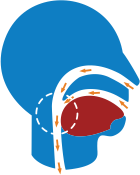
Opened upper airway
Clear and open upper airway allows air to flow freely to and from the lungs.
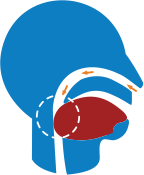
Closed upper airway
Snoring and apnea (breathing pauses) occur when the upper airway collapses.
Weak muscles in the airway, a large tongue, obesity and other factors may cause airway tissue to collapse and obstruct breathing.
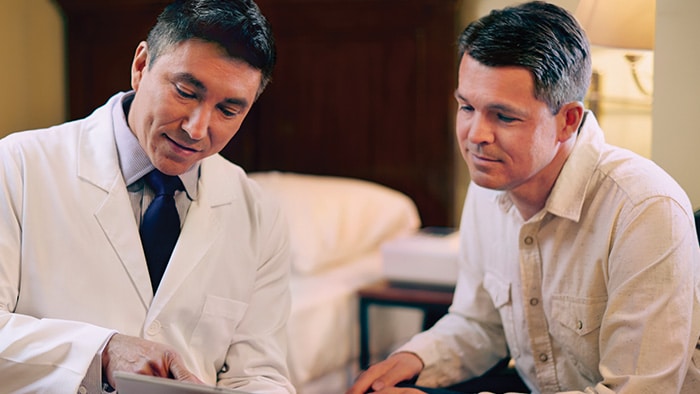
Find out if you have symptoms of sleep apnea
Snoring could be more than annoying – it could be a danger to your health. Take our 9-question quiz to find out if you’re at risk.
You’re not alone
Approximately 7-9% of Indian adult population has suffering from sleep apnea, and 80% of Indian adults with a partner/spouse who has sleep apnea say the condition is impacting their relationship. That’s significant because sleep apnea is a serious condition. Sleep apnea disrupts the sleep cycle and can dramatically impact energy, mental performance and long-term health. In some cases, if left untreated, sleep apnea can be fatal. It can be hard to take the first steps into finding out if you have sleep apnea. We are here to help.
Factors that can increase the risk of having Sleep Apnea
Risk Factors:

Obesity

Increasing Age

Male Gender

Alcohol or Sedative use

Smoking

Endocrine & Metabolic Disorders

Family History
Sleep apnea symptoms and risks
Untreated sleep apnea is associated with a number of health risks, so it’s important to consult a sleep specialist if you have these signs and symptoms.












What are the risks of untreated sleep apnea?
Sleep apnea can have serious short and long-term health risks if left untreated including:
Take this symptom quiz and understand if you are at a risk of Sleep Apnea or not
Q1 Snoring Do you snore loudly (than talking or loud enough to be heard through closed doors)?
Q2 Tired Do you often feel tired, fatigued, or sleepy during daytime?
Q3 Observed Apnea Has anyone observed you stop breathing during your sleep?
Q4 Pressure Do you have or are you being treated for high blood pressure?
Q5 BMI Is your BMI > 35 Kg/m2 ?
Q6 Age Is your age > 50 yrs?
Q7 Neck Circumference Is your neck circumference > 40 cm?
Q8 Gender Male
Questionnaire is a screening tool for Obstructive Sleep Apnea (OSA). A score of 0-3 indicates low risk of OSA, 4-5 an intermediate risk of OSA and a score of 6-8 indicates a high risk of OSA. We advise persons with a score>3 to visit their nearest Sleep Specialist to get screened and diagnosed for Obstructive Sleep Apnea.
How do I get diagnosed?
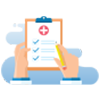
Step 1 Fill up a risk assessment
questionnaire
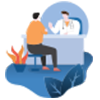
Step 2. If medium or high risk
then visit a sleep specialist

Step 3. Undergo an overnight sleep test in clinic or at home

Myth: I don’t think I will be comfortable sleeping in a sleep lab.

Fact: Though many people have this fear, most are able to fall asleep in the sleep lab.
By Teofilo Lee-Chiong, MD, chief medical liaison, Philips Healthcare Solutions
Sleep studies 101
Getting diagnosed: personal experiences Hear from people who took the leap and met the challenges involved in getting diagnosed. Watch now
What is AHI?
The Apnea Hypopnea Index (AHI) is the most important number on your sleep apnea test. It measures the number of times you have an apnea (when you stop breathing for short time) or a hypopnea (when you partially stop breathing for a short time) while you’re asleep. Read an example of a sleep study test result, showing AHI and other measurements used during a sleep study.
Contact Us
Philips Dream Family is available from a number of retailers. Contact your homecare provider to request our products.
For assistance, call 1800 258 7678 or SMS SLEEP to 58888
Note: These products require a prescription. Consult your sleep therapy physician before ordering DreamWear masks and devices.
Frequently asked questions
- What is obstructive sleep apnea?
-
Obstructive sleep apnea is a condition in which a person stops breathing repeatedly through the night. Breathing stops because the throat or “airway” collapses and prevents air from getting into the lungs. Sleep patterns are disrupted, resulting in excessive sleepiness or fatigue during the day.
- How many people in the United States have sleep apnea?
-
Five to 10 percent of adults in the United States have Obstructive Sleep Apnea. This is about 20 million people, and many—the majority—are yet to be diagnosed.
- What causes the airway to close during sleep?
-
- Extra tissue in the back of the airway, such as large tonsils
- Decrease in the tone of the muscles that hold the airway open
- The tongue falling back and closing off the airway
- What should you do if you think you may have sleep apnea?
-
Evaluation by a doctor specializing in sleep disorders is recommended. Have a sleep study done. A sleep study can provide the doctor with information about how you sleep and breathe. This information will help the doctor to determine your diagnosis and treatment options.
- What are the risks of untreated sleep apnea?
-
Sleep apnea can have serious short- and long-term health risks if left untreated, including:
- High blood pressure
- Irregular heartbeat
- Heart disease / heart attack
- Stroke
- Type 2 diabetes
- Driving- and work-related accidents
- What is the treatment for sleep apnea?
-
Most commonly, positive airway pressure (PAP) therapy is the treatment. It is noninvasive and can help with symptoms when used as prescribed. Less commonly, surgery or oral appliances are used, which may be effective in certain cases. Any treatment plan should include weight loss if needed, exercise and avoiding alcohol, sedatives and hypnotics.
- How does PAP or CPAP therapy work?
-
CPAP (Continuous Positive Airway Pressure) provides a gentle flow of positive-pressure air through a facial mask to keep the airway open during sleep. As a result:
- Breathing becomes regular during sleep
- Snoring stops
- Restful sleep is restored
- Quality of life is improved
- Risk for high blood pressure, heart disease, heart attack, stroke and motor vehicle and work accidents are reduced
- What are the nighttime symptoms of sleep apnea?
-
- Loud or disruptive snoring
- Witnessed pauses in breathing
- Choking or gasping for air during sleep
- Restless sleep
- Frequent visits to the bathroom
- What are the daytime symptoms of sleep apnea?
-
- Early morning headaches
- Excessive daytime fatigue
- Poor concentration
- Depression or irritability
- Falling asleep during routine activities
- What can put you at increased risk for sleep apnea?
-
- Overweight/obesity
- A large neck or tongue
- Extra tissue or crowding in the airway
- What does an apnea episode look like?
- What are the benefits of regular usage of PAP therapy?
-
Most PAP users who remain committed to treatment enjoy:
- Increased energy and attentiveness
- Fewer morning headaches
- Reduced irritability
- Improved memory
- Increased ability to exercise
- Lower blood pressure
- Decreased risk of strokes and heart attacks
- Increased effectiveness at home and at work
- Improved overall quality of life

Have a question?
We’re here to help

To book a free tele-session with sleep educator

Locate nearest sleep specialist*

Find nearest authorized Service Centre

Call 1800 258 7678
References For informational purposes only, not to replace physician's directions.
Disclaimer : *Philips makes no representations or warranties of any kind, express or implied, with regard to the accuracy or completeness of information, content or materials or views expressed herein by any author. It is not intended as a substitute for informed medical advice. The reader is cautioned not to use or replicate any information included herein to diagnose or treat any health problem or disease without consulting a qualified health care professional. Philips shall not be liable for any damages of any kind arising from the contents of this website, including but not limited to direct, indirect, incident, punitive and consequential damages.
